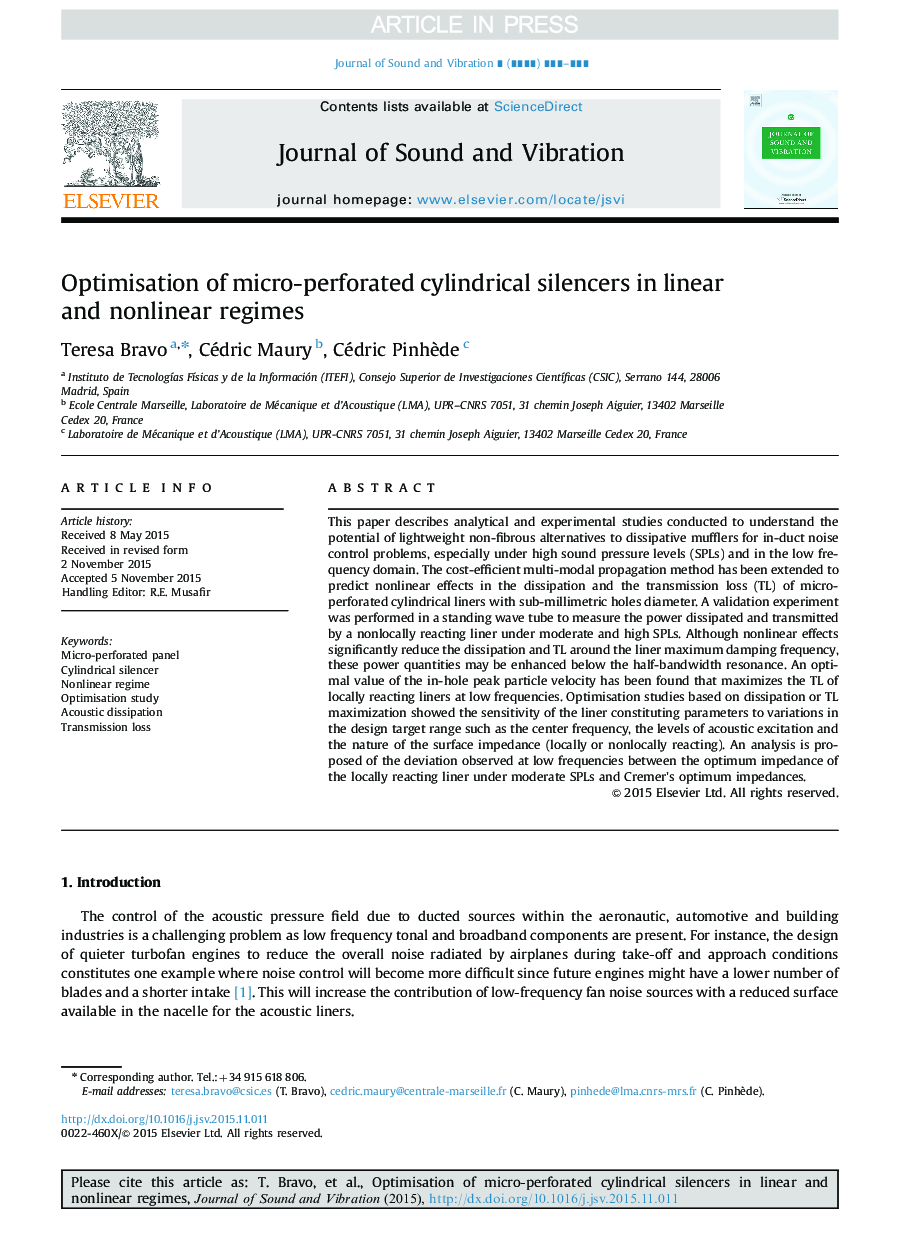| Article ID | Journal | Published Year | Pages | File Type |
|---|---|---|---|---|
| 6754916 | Journal of Sound and Vibration | 2016 | 21 Pages |
Abstract
This paper describes analytical and experimental studies conducted to understand the potential of lightweight non-fibrous alternatives to dissipative mufflers for in-duct noise control problems, especially under high sound pressure levels (SPLs) and in the low frequency domain. The cost-efficient multi-modal propagation method has been extended to predict nonlinear effects in the dissipation and the transmission loss (TL) of micro-perforated cylindrical liners with sub-millimetric holes diameter. A validation experiment was performed in a standing wave tube to measure the power dissipated and transmitted by a nonlocally reacting liner under moderate and high SPLs. Although nonlinear effects significantly reduce the dissipation and TL around the liner maximum damping frequency, these power quantities may be enhanced below the half-bandwidth resonance. An optimal value of the in-hole peak particle velocity has been found that maximizes the TL of locally reacting liners at low frequencies. Optimisation studies based on dissipation or TL maximization showed the sensitivity of the liner constituting parameters to variations in the design target range such as the center frequency, the levels of acoustic excitation and the nature of the surface impedance (locally or nonlocally reacting). An analysis is proposed of the deviation observed at low frequencies between the optimum impedance of the locally reacting liner under moderate SPLs and Cremer׳s optimum impedances.
Related Topics
Physical Sciences and Engineering
Engineering
Civil and Structural Engineering
Authors
Teresa Bravo, Cédric Maury, Cédric Pinhède,
